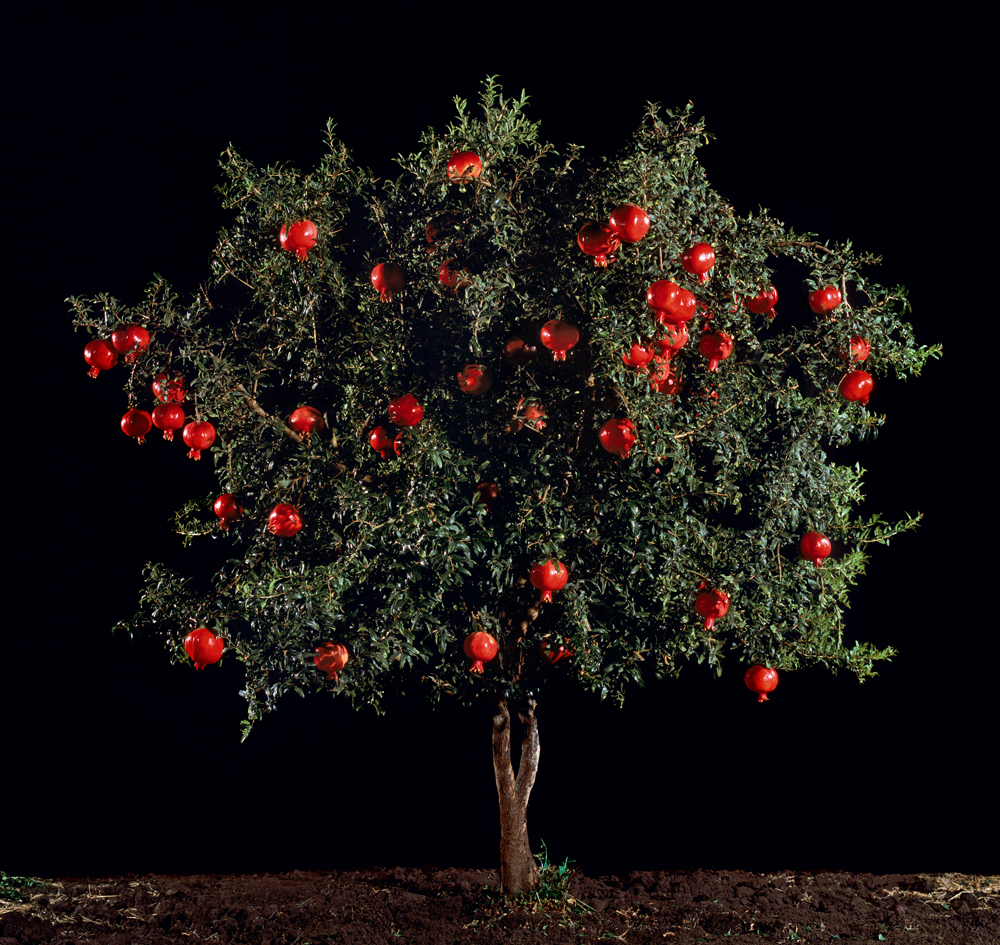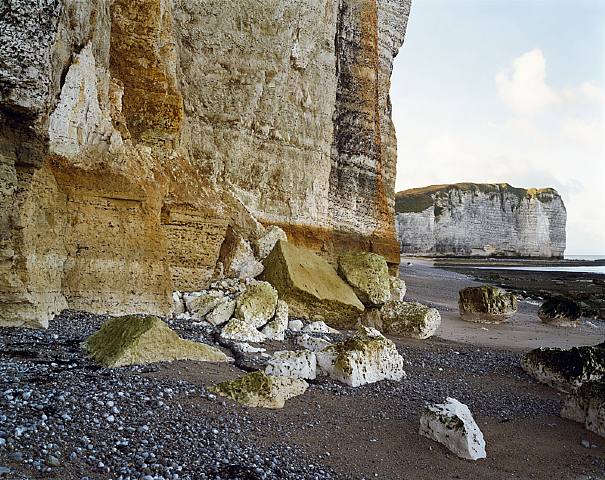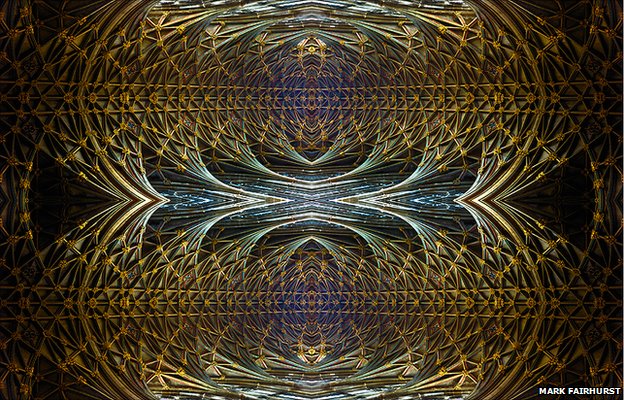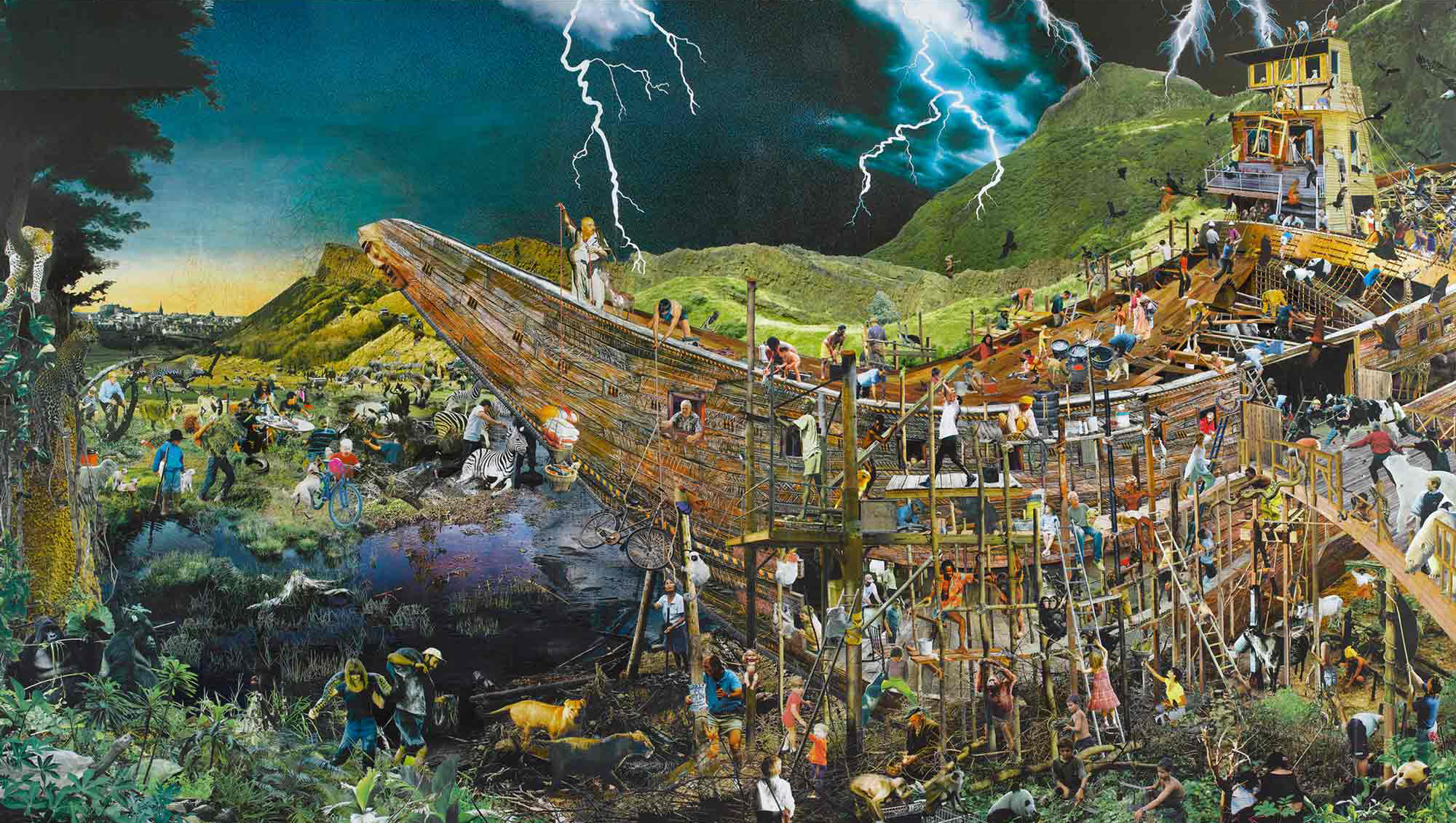At the V&A, Light From the Middle East: New Photography is an Art Fund sponsored exhibition bringing together over 90 works from 30 artists, broadly representative of contemporary practice in the greater Middle Eastern area (including North Africa). Photographs range from black and white documentary coverage of conflict (including work from the Iran Diary series of the well-known Magnum member Abbas), to wry commentary on the incorporation of Western materialism by Islamic culture.
Less a critical engagement with familiar political and religious topics, than a conceptual arrangement of different approaches to image-making, the exhibition presents artists who “investigate the language and techniques of photography”. ‘Recording’, ‘Reframing’ and ‘Resisting’ are the titles given to the 3 rooms of the exhibition, within which artists explore such media-interventions as digital and paper collage, scratched or burned prints, and assemblage framing. The highly successful film of Jananne Al-Ani, Shadow Sites II (2011), builds a sequence of desert aerial photographs into a semblage of stealth-like movement with slow zooms and closely-aligned fades, accompanied by a soundtrack of background noise from both ground and air.
In some instances, the imagery seems too quick to connote, rather than denote, to borrow Roland Barthes’ terms. “At once invisible and active, clear and implicit,” connotation plunges the viewer into the ready assimilation of cultural codes: so we see, and immediately grasp, the visual cliché of Shadi Ghadirian’s series Qajar (1998), featuring Iranian portrait photography with traditionally-dressed sitters holding a soft-drinks can, or sitting alongside a mountain bike. Burqa-clad women show off their Louis Vuitton accessories in Hassan Hajjaj’s Jama Fna Angels (2000), and in a reference to Manet’s Olympia (1863), Raeda Saadeh’s self-portrait Who Will Make me Real? (2003) shows the artist in a similarly reclining pose, wrapped in Palestinian newspaper.
Where the photography becomes more interesting is in playing to the slow-burning strength of denotation: “the message without a code” that underwrites any rhetorical or artistic inflexion carried by the image. So the hyperreal clarity of Tal Shocat’s series of fruit tree studies (Persimmon (Afarseman), Pomegranate (Rimon) and Grapefruit (Eshkolit), 2010-11) reflect an absurdly unnatural state of perfected ripeness. Meticulously cleaned and separated against a black background, these naturally-growing trees thwart an Edenic lushness with their knowingly artificial and contrived image. Similarly subtle, Magnetism I and II by Ahmed Mater (2012) seem to depict pilgrims circling the Ka’ba in Mecca, but in fact show the close-up view of iron filings drawn to a cube-shaped magnet. Here, the technique of scale and tilt-shift effect (whether in camera or digitally produced) present an abstraction of scene that comments on the abstracted symbol of religious festival.
Noticeably, the absence of the human figure in these two examples perhaps lends photography a hand out of short-circuited documentary imagery. Depictions of a Sufi festival by Issa Touma (1995-2005) certainly bring us into the circle of Islamic practice that otherwise discourages representation of the human form, but here, as elsewhere in the exhibition, the images of crowds and worshippers remain the documented ‘other’. A more suggestive invitation to assess the incarnational and interdependent aspect of belief and faith comes in the series Light (2006) by Waheeda Malullah, who photographs herself lying next to simple white-tiled tombs in Bahrain. She comments on the Shi’i Muslim custom of seeking blessing by touching the tombs of revered people, occasionally with light-heartedness, and also more poignantly as in the image of her cruciform body with arms stretching across tombs on either side of her.
Such human presence is undoubtedly a key way in which a viewer finds in photography immediate context, if not close identification. The work of Ansel Adams (see last post), in marked contrast, is completely devoid of figures. We may well ask what type of photography may include the body, and maintain an open commentary, less attached to particular religious observance, on things felt or intuited (as well as seen), even to a spiritual degree.
Quotes from: the V&A website, accessed 21/12/12; Roland Barthes, “The Photographic Message” in Image Music Text (London: Fontana Press, 1977), p.17, 19.
Header image: Pomegranate (Rimon), 2010, by Tal Shochat.



